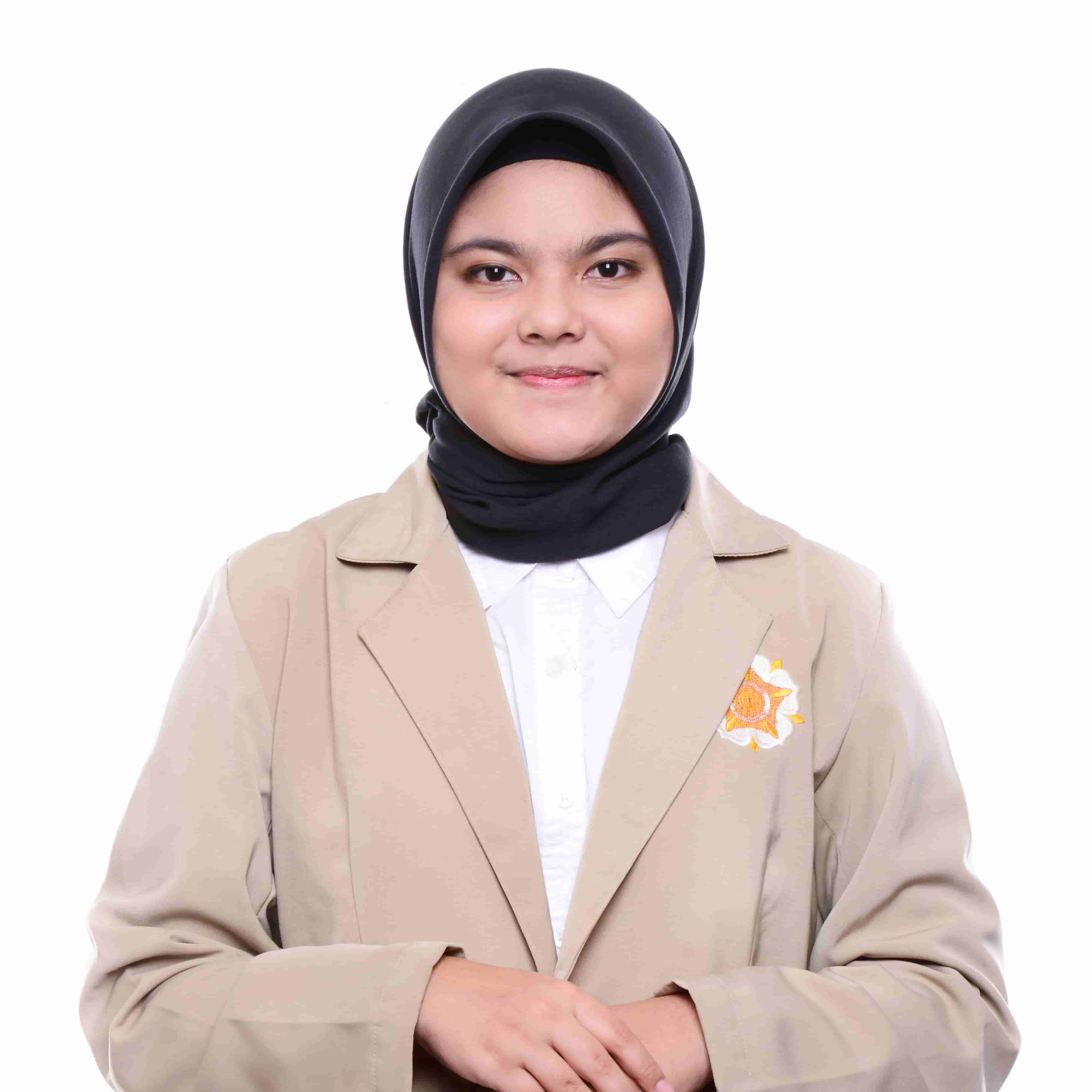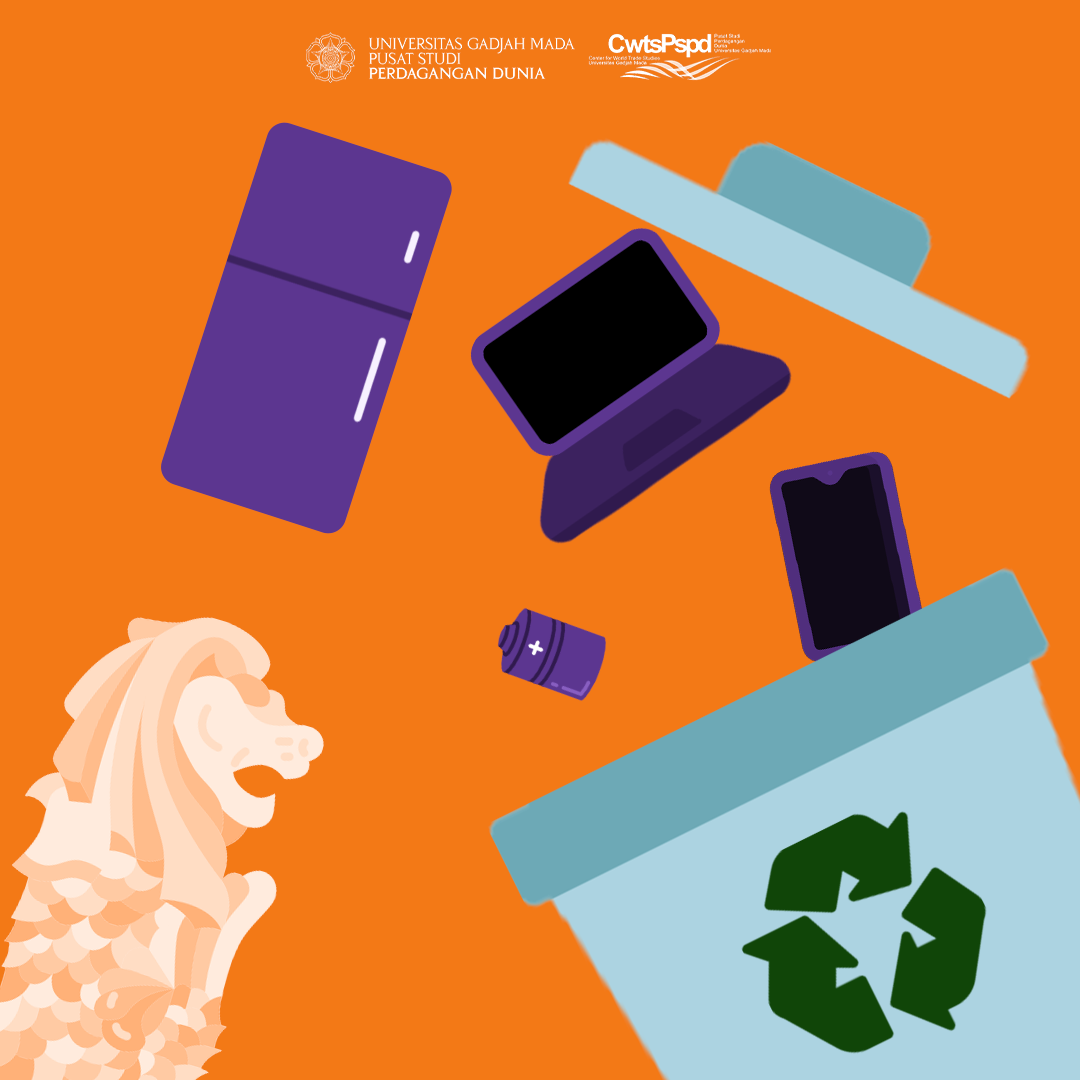Illustrated By: Marsha

Wrirtten By:
Raevita Andriessa
SEO Content Writer, Pusat Studi Perdagangan Dunia Universitas Gadjah Mada.

Editor:
Nabila Asysyfa Nur
Website Content Manager, Pusat Studi Perdagangan Dunia Universitas Gadjah Mada.

Ilustrated By:
Marsha
Desainer Grafis, Pusat Studi Perdagangan Dunia Universitas Gadjah Mada.
Singapore is a well-known developed country with limited availability of green space due to their narrow territory. This causes Singapore to be extremely vulnerable to environmental damage caused by the slightest activities from their citizens and climate change. Therefore, the Singapore government kept themselves on the qui vive in dealing with the environmental issues to maintain their environmental sustainability in order to enhance the living quality. In developing the economic system, the Singapore government strives to innovate in creating an environmental-friendly economic system. Crafting an integrated circular economy system is one of their strategies to advance their economic activities and environmental sustainability at the same time.
Getting to Know Circular Economy’s Concept
Based on the official website of UNCTAD, the circular economy can be defined as a restorative or regenerative industrial system that involves the act of regeneration of the used products in its implementation. The circular economy model is different from the dominant linear economic model that is widely implemented nowadays. The linear economy has an 'extraction-use-disposal' pattern, meaning that a product will eventually end up as waste after being used. A different concept is applied on the circular economy model, where all forms of waste from the production process are to be regenerated into other products or to be used more efficiently. The implementation of a circular economy can help the country to utilize the industrial resources in a more mindful manner, leading to the development of new sectors of industries ahead which help to open up more opportunities in the future.
These efforts include switching to the use of renewable energy, eliminating the use of toxic chemicals, and minimizing production waste. Circular economy can also be carried out by reusing, recycling, converting functions, donating or selling used products to people in need. Product restoration by extending its life and service life aims to reduce waste from manufacturing activities from products to keep the environment sustainable and avoid damage.
E-waste Management in Singapore
Reporting from the Center for Liveable Cities Singapore, Singapore began implementing the Zero Waste Nation master plan in 2019. This master plan aims Singapore to eliminate all waste that has accumulated in the Semakau landfill, which is predicted to reach its holding capacity by 2035. To eliminate all the waste that accumulates in these landfills, the government puts extra effort on reducing the amount of waste input which can increase to 2000 tons per year. One of the strategies that can reduce the amount of waste input into the capacity-deprived landfills is to promote a circular economy program that is considered effective in doing so.
As one of the efforts to achieve this vision, the National Environmental Agency (NEA) of Singapore has implemented an electronic waste (e-waste) management work program to improve the quality of the environment in Singapore. NEA defines e-waste as the various forms of electronic equipment that have been disposed by their user, including almost any item powered by electrical sources. Most commonly encountered forms of e-wastes consists of communication technology (ICT) equipment, household appliances, sports equipment, lighting equipment, and so on. E-waste mostly consists of metal and plastic components, yet also contains small amounts of heavy metals and substances that are considered as potential pollutants. The wide range of variety of e-waste composing materials requires them to undergo a different unconventional disposal procedure, making them almost impossible to only dispose them in normal landfills just like other forms of waste.
E-waste management is a crucial step to revitalize the quality of the environment, considering the fact that e-waste is one of the major contributing factors to environmental damage. As written in the official Elytus blog, e-waste contains hazardous chemical compounds such as mercury, lithium, and copper which can cause serious contamination of water, soil, and air that can heavily impact the health of living beings when disposed perfunctorily. Meanwhile, based on data from the NEA, a country with a small territory like Singapore can already produce 60,000 tons of e-waste per year, and only 20% or around 8.9 tons of the total e-waste has been recycled.
Seeing the inadequate condition of e-waste management in Singapore, NEA also invites Singaporeans to participate in reducing the amount of e-waste in Singapore in their freshly launched "Extended Producer Responsibility (EPR) System for E-waste Management System" program back in July 2021. Through this program, the public can easily distribute their electronic waste to an e-waste processing site so that the handling of this waste no longer needs to go through the incineration process in public landfills that are not environmentally friendly. In order to reach their goal of eradicating e-waste, NEA collaborated with ALBA Group, a private company engaged in the environment, to launch a new innovation in the form of special e-waste bins.
As reported by Channel News Asia, 300 units of special e-waste bins were distributed to numerous public places in Singapore on July 1, 2021. The creation of the e-waste bins from NEA became one of the spotlighted programs considering their user-friendly nature that can engage people to participate in the program. The procedure of use starts with the e-waste donors who can simply dispose of their electronic waste based on separated categories, such as small used electronic goods (printers, keyboards, monitors, tablets, etc.), batteries (of all sizes), and light bulbs (except long fluorescent lamps). What's even more interesting is that e-waste donors can get monetary rewards after disposing of their e-waste by downloading the ALBA Step Up application and scanning the QR code on the trash can unit to confirm the collection of e-waste and later they will receive the money from the e-waste donations.
Furthermore, the electronic waste that has been collected will be distributed to domestic electronic waste processing facilities. Through its official Youtube channel, NEA elaborated the process of processing electronic waste by Cimelia, one of the electronic waste processing facilities in Singapore. It is explained that the process of processing electronic waste is an extremely complicated process, involving the processes of material sorting, disassembling, and classifying based on their main ingredients. The final outcome of the whole process will be in the form of ready-to-process raw materials and will be distributed to other industrial manufacturers, such as the technology industry, automotive, construction, and even for the production of luxury goods.
The Impact on Society
The EPR System for E-waste Management System work program can significantly increase public awareness of the impact of electronic waste on the environment. The citizens can possess enhanced knowledge on managing their owned electronics and what to do when they become an e-waste. However, in reality, there are still many obstacles faced by NEA in increasing the awareness of the people who participate in donating their e-waste for the success of the work program.
As reported by The Straits Times, some citizens are not fully aware about the types of electronic waste that can be accepted by the e-waste collection bins. E-waste sorters from ALBA admitted that they still found a lot of other types of waste, such as breastfeeding equipment, children's toys, and massagers that were thrown into a special e-waste bin. They also still found the original packaging made out of plastics and cardboards that is still encasing the electronic waste inside some bins.
What is more concerning is that the trash bins have provided instructions on how to properly dispose e-waste into the bin, as well as information on what items can still be accepted by the trash can. This can increase the level of difficulty in the waste sorting process and will eventually slow the whole recycling process. Therefore, education regarding the management of electronic waste by the NEA should be further encouraged in the future in order to avoid misperceptions by the society.
The Singapore government has carried out an outstanding effort to reduce e-waste through their variative programs in order to maintain environmental sustainability. This program can indeed provide great benefits to society, especially in the economic field, where this program is a milestone for Singapore to implement an environmentally friendly circular economy. In the future, Singapore Government needs to promote socialization and education to the community regarding their contribution towards this program to increase the effectiveness of this work program with maximum community participation. Through a more integrated system that involves many parties and the community, Singapore will become an epitome for other countries to implement a circular economy, particularly in a better e-waste management system

